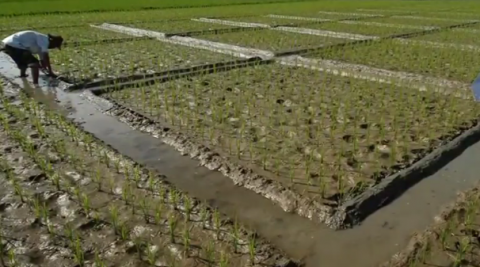
KARAWANG, Indonesia (Reuters) — A new study paints an alarming picture for the future of the rice industry.
Researchers found that a high level of surface ozone pollution is wreaking havoc on a stage of the rice plant’s development in China – the world’s largest producer of the staple crop.
“Peaks in ozone when you have 2 or 3 really bad days of high surface ozone which is like air pollution can have huge impact on yield, a negative yield,” said Colin Carter, the lead researcher on the study and a professor of agricultural and resource economics at the University of California, Davis.
The scientists found that rice yields can be affected by as much as 2 percent, a serious statistic given that China produces 30 percent of the global rice crop. Just 8 percent of global rice production is traded internationally, with the rest consumed in its country of origin. This means any production fall can prove devastating to those in poor countries.
Surface ozone pollution is directly tied to the emission of nitrogen oxides produced by cars, power plants, and refineries, all part of a rapidly growing industrialized landscape in China.
In this study the researchers compared air quality data, as well as rice yield statistics from 2006, 2008, and 2010 during the growing season in parts of Southeast China. The results showed a direct link between high surface ozone levels and poor rice yield.
“Another important factor is the pollution is not improving in China, it’s getting worse. So if you look at some of the projections for increased ozone pollution in China, these numbers will increase and yield losses will be higher,” Carter added.
As the yield losses increase, the impact on global rice market rise. Left unchecked, rice prices could rise by 20 percent in the years to come, say researchers.
“This will have an impact on the price of rice throughout the world. It will impact the price of rice in Africa, in India, in Pakistan. So it is not just the Chinese consumers that are affected but globally the rice industry will be affected,” Carter said.
The study points to a future where the price could threaten global food security, leaving the world’s poorest – who depend on rice as a staple food – at increased risk of malnutrition and starvation. The findings were published earlier this month in ‘Nature’s Scientific Reports’.








